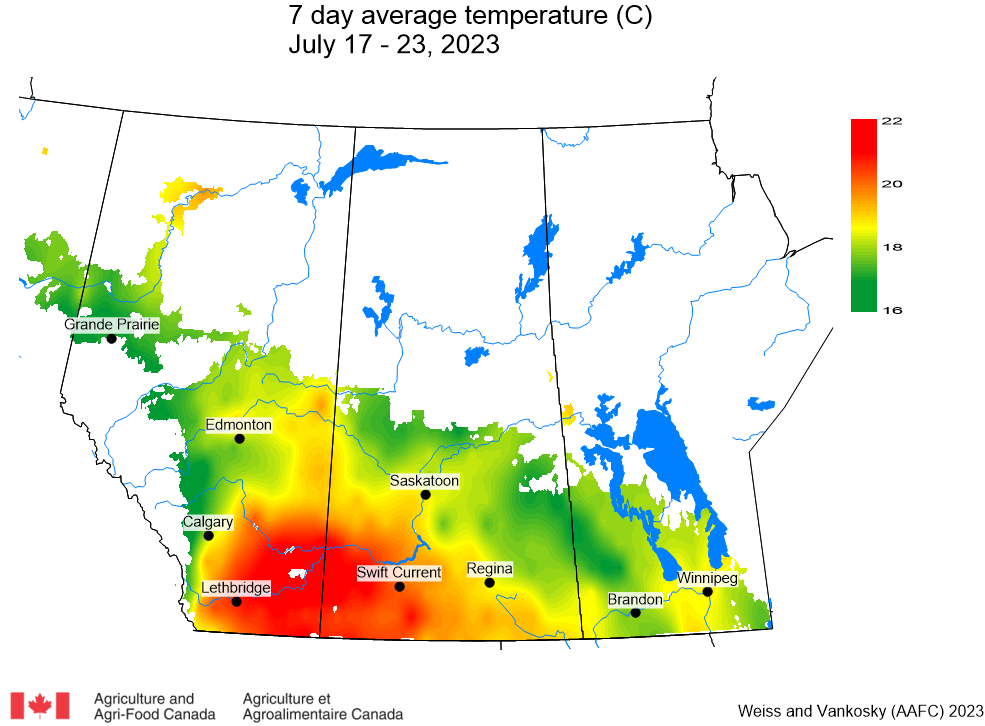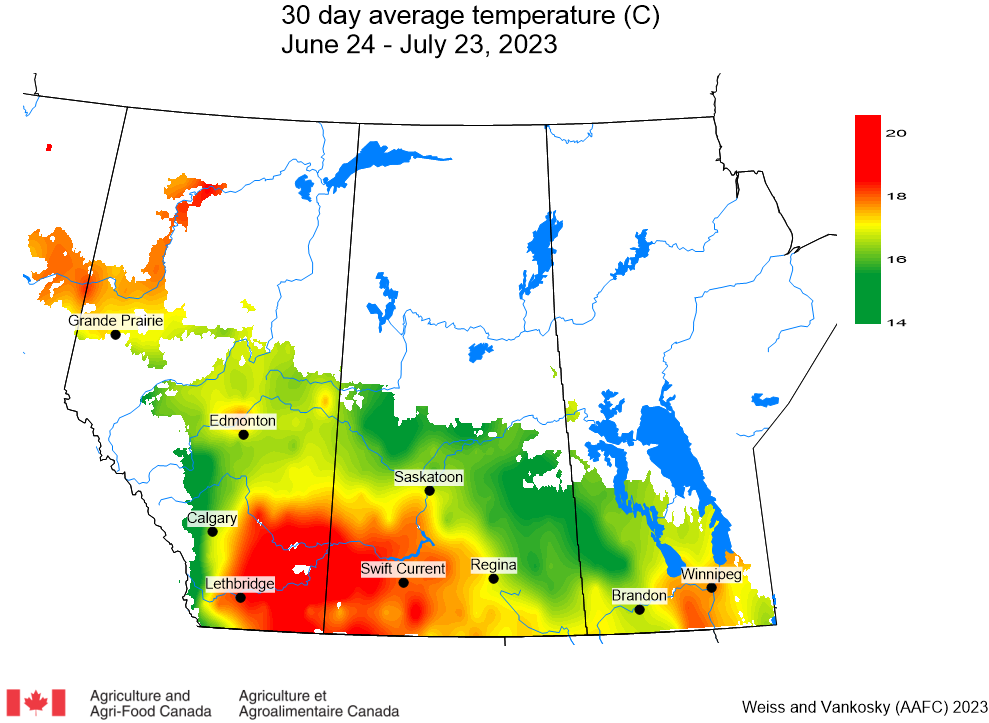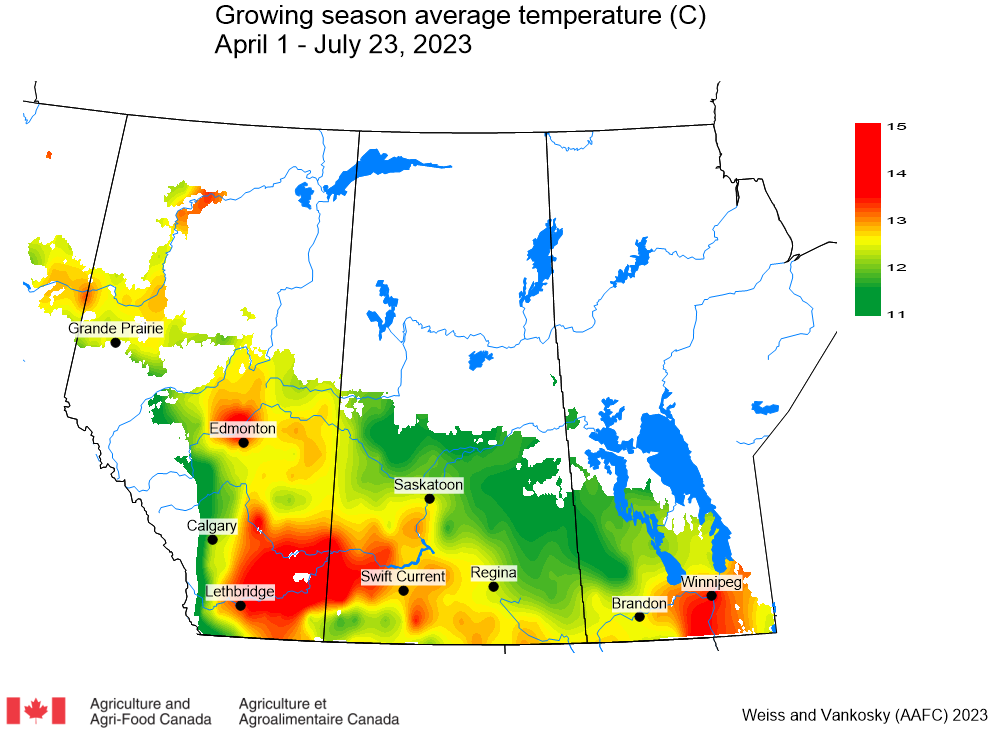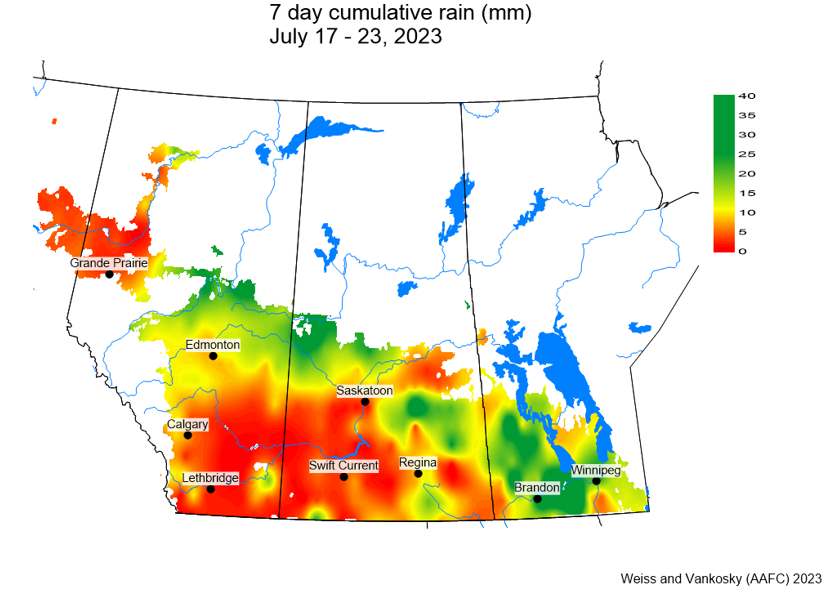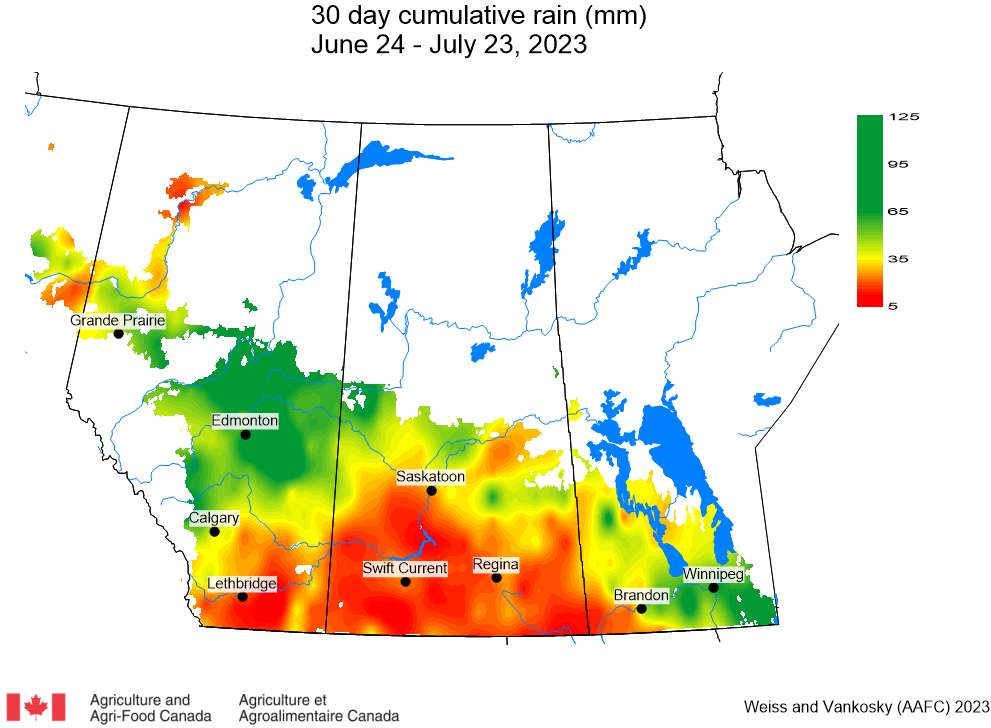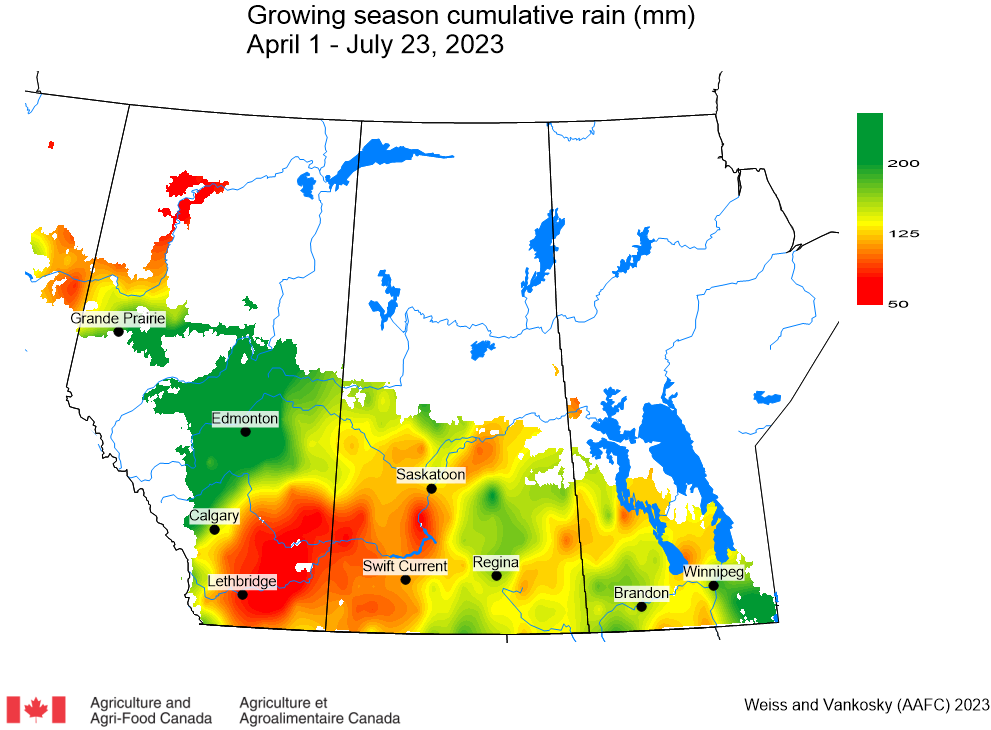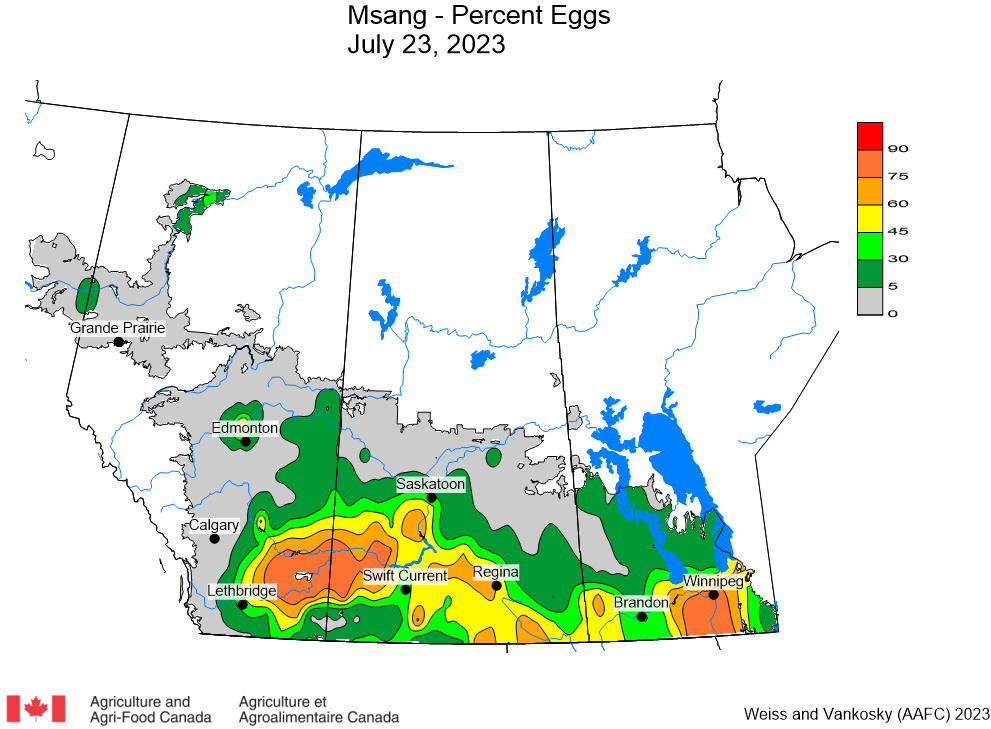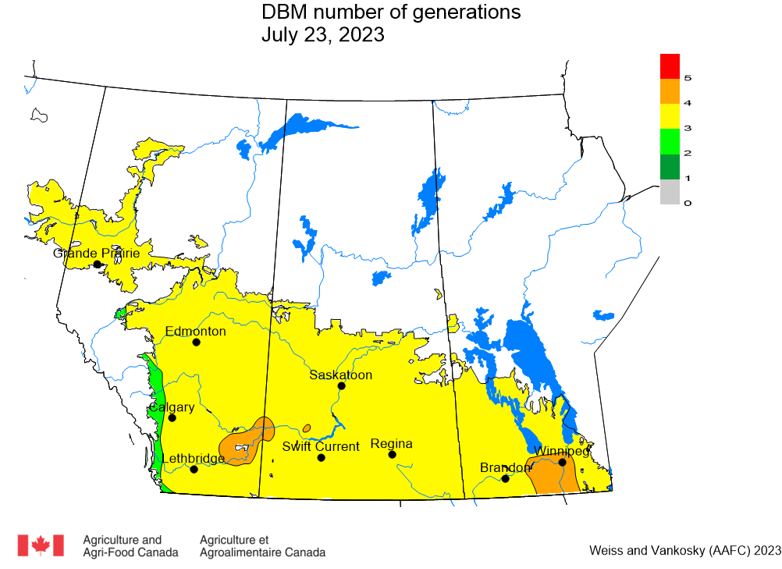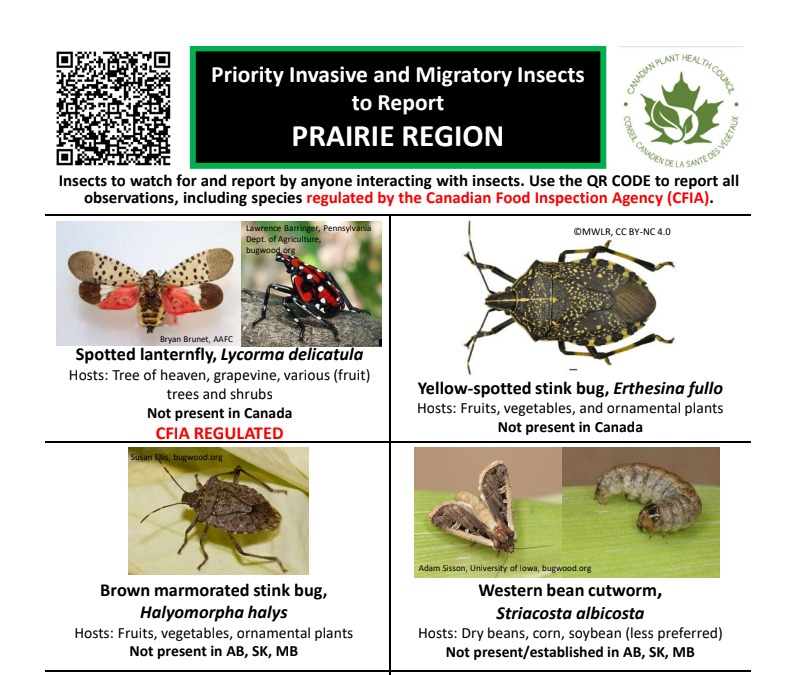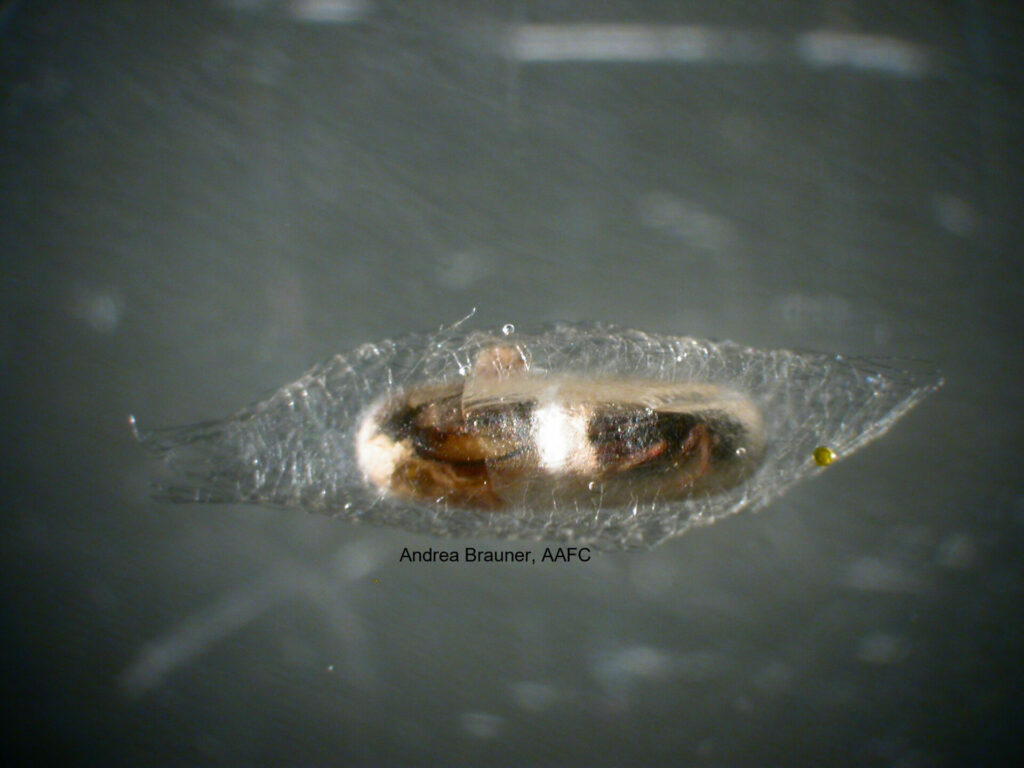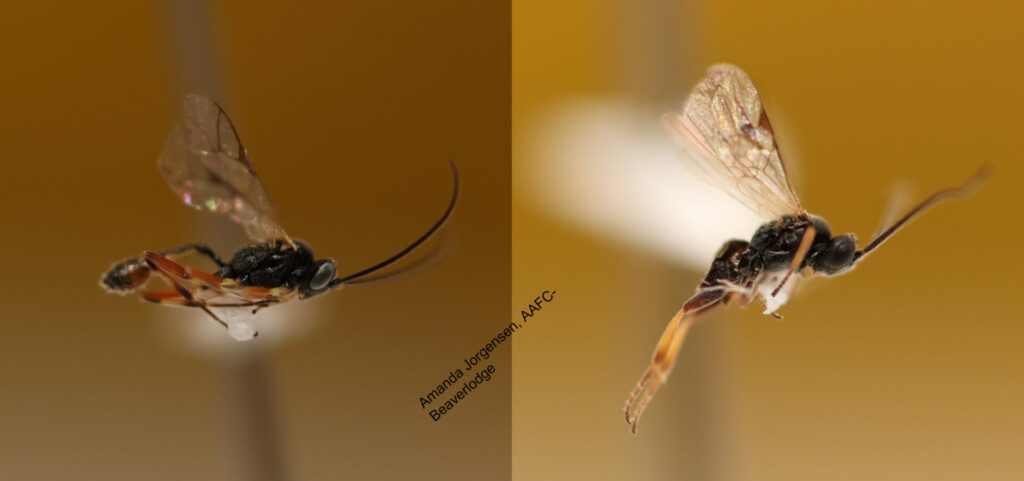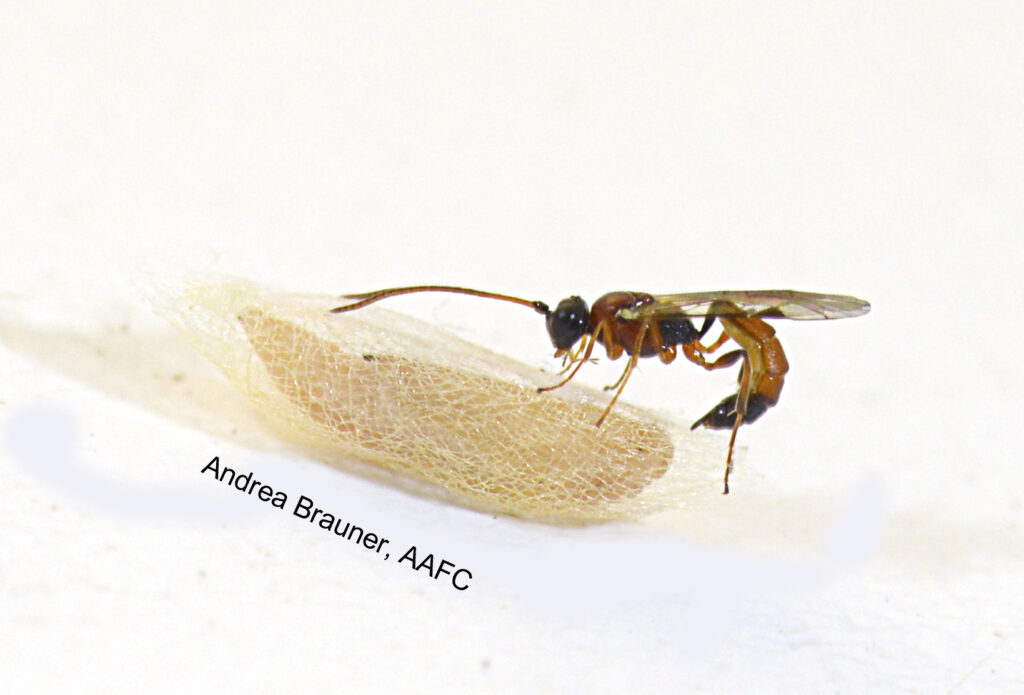It sounds like harvest has started in some parts of the prairies in the past week, but crop development and insect pest issues are variable across the prairie region. Insect scouting season continues! Development of many pest insects (and of their host crops) is ahead of schedule this year, thanks to warmer than average weather during this growing season.
Adult grasshoppers are becoming more and more common across the prairies. The stage of grasshopper development and grasshopper population densities can vary between fields, thus scouting individual fields is important to best estimate crop risk. Now that adult grasshoppers are active, egg laying has begun.
Diamondback moth, if present, are into the fourth non-migrant generation in some parts of the prairies now. Keep in mind that diamondback moth develop quickly in warm weather which could lead to rapidly increasing populations over the summer. Scout canola fields for diamondback moth larvae and use the links in the Provincial Insect Updates post to learn about diamondback moth risk in your region. Parasitoids of diamondback moth are highlighted in the Week 12 Insect of the Week!
Watch out for Invasive and Migrating Insects! If you suspect that you have found any of the insects on the Prairie Region Poster, please let us know using the form linked to the QR code on the poster. Note: many of us entomologists on the prairies are members of the Insect Surveillance Community of Practice!
Remember: 1) there are many resources available to help with planning for late-season insecticide applications to ensure Pre-Harvest Interval requirements are met, and 2) insect Monitoring Protocols containing information about in-field scouting as well as information about insect pest biology and identification are available from the Prairie Pest Monitoring Network.
To receive Weekly Updates automatically, please subscribe to the website!
Questions or problems accessing the contents of this Weekly Update? Please contact Dr. Meghan Vankosky (meghan.vankosky@agr.gc.ca) to get connected to our information. Past Weekly Updates, full of information and helpful links, can be accessed on our Weekly Update page.

